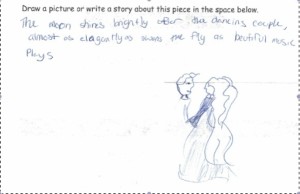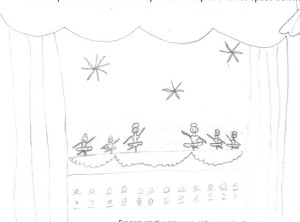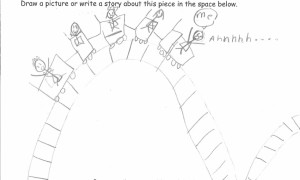I just returned from the annual TMEA convention in San Antonio. Although this convention is geared mostly at public school music teachers, I feel there are enough sessions that are applicable to me as a piano and early childhood music teacher – after all, we’re all teaching music!
One of my favorite sessions came from Dr. Rhona Brink and was titled “All for the Little Ones’ Natural Joy.” Dr. Brink believes that all students are born with a natural love of music and it is our job as music teachers not to kill that love. Such a unique shift on the thought that teachers have to somehow develop that inner love of music. So how do we pull out that natural love of music? Allow our students to be creative and use their imagination when responding to music. Dr. Brink suggested that the over-use of props and manipulatives can stifle a student’s imagination. Instead of offering pictures and props we should allow students to create a picture in their head.
Along with my Piano Points system, I have been working to help my students enjoy listening to quality music. I use the “Listening Challenge” worksheets created by Jennifer Fink at pianimation.com. Find the elementary worksheet here and the intermediate worksheet here. I especially love the section on the elementary worksheet for students to draw a picture or write a story about what they hear in the music. Here are some of the creative responses I have gotten in this section:
I have provided my students with a list of CD’s available of the public library with music by standard composers and also encouraged them to explore performances posted on youtube.com. They can complete as many listening sheets as they want, each completed sheet is worth one piano point. If a student is learning a piece that is a melody or arrangement from a larger work I encourage them to look up the whole work. I’ve also started a having a bi-weekly “Bonus Point” video students can watch for 3 Piano Points that week only. You should see the looks on their faces when they are offered 3 points just for completing a listening worksheet!
This past week our bonus was Rimsky-Korsakov’s “Flight of the Bumblebee” performed by the Five Browns. This piece is short enough to maintain the attention of my students and also fast and exciting. One of my bright students asked if the Five Browns could be called a penta-piano since they are playing on 5 pianos! Wouldn’t it be great if we could get our students to “waste time” searching youtube for videos of great pianists and orchestras rather than One Direction and Justin Beiber? I’m hoping that by offering these bonus pieces I can inspire at least a few of my students to do just that.
Author: Spring
Spring Seals, NCTM, teaches 60 piano students ranging from age 3 to 70 in Fort Worth, Texas. She also serves as the Director of Certification for TMTA. She is passionate about helping teachers become more effective in their studios through professional development, new resources, and fresh ideas.




